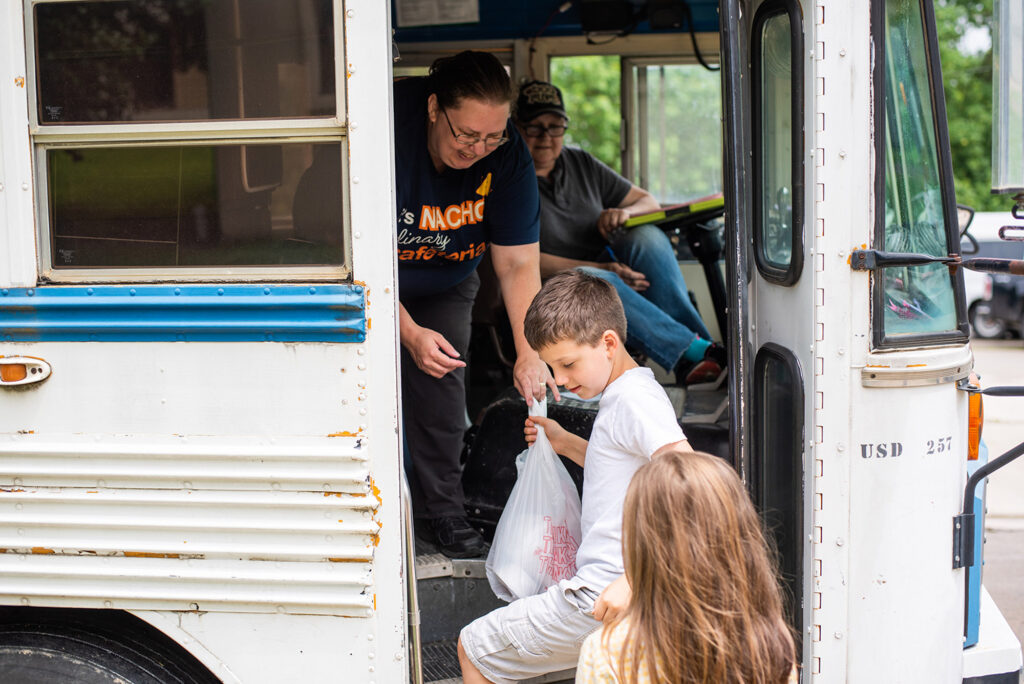
Being a teenager is mortifying. Your brain and body are still developing, and everything happening to you impacts that development, especially the moments you’d rather forget. So, the question is, why does Kansas continue to allow a legal practice that research has proven demeans, humiliates, and stigmatizes Kansas children?
The practice in question is youth shackling. This involves using chains, leg irons, handcuffs, and/or restraints on youth in custody, transferred to court, or during a court hearing. That means children–boys and girls who are still growing physically and mentally–are being restrained with shackling devices that can weigh up to 25 pounds. In 2016, the Legislature committed to a rehabilitative youth justice system. Yet, from the start of their involvement with the justice system, children in Kansas are treated as dangerous criminals.
Shackling is a cruel and pointless practice.
These children do not threaten adults working with them in the justice system. For a reference point, the average height of boys 12 to 14 years old in the United States is 5’4’’, and their average weight is 127 pounds. For American girls 12 to 14 years old, the average height is 5’2’’, with an average weight of 125 pounds. In comparison, the average American male 20 and older is 5’9” and 200 pounds, and the average American female 20 and older is 5”4’ and 171 pounds. Not only are the children not a threat based on their size, but they are also likely there for misdemeanor offenses. In 2023, 75% (12,500 cases) of all juvenile cases in Kansas were for misdemeanors. Misdemeanors are lesser crimes. These are not violent, hardened criminals being weighed down and humiliated with shackling, but children whose brains and decision-making facilities are still developing.
Shackling is counterproductive. Rather than protecting anyone, it is doing real and lasting harm to Kansas children.
Research shows indiscriminate shackling of youth leads to retraumatization and shame and increases recidivism of youth involved in the justice system. Experts and medical professionals agree that public shackling is inherently shame-producing and humiliating. This is even more acute in children and adolescents who are vulnerable to lasting harm from humiliation and shame. Shackling labels children as dangerous, and they are likely to react negatively to being stigmatized. That has lasting adverse effects on self-identity formation, which the teenage years of development are crucial to.
The lack of self and community identity that shackling produces in children could lead to more oppositional behavior. Researchers explain that this is because children have noncompliant The lack of self and community identity that shackling produces in children could lead to more oppositional behavior. Researchers explain that this is because children have noncompliant reactions in an attempt to regain control and counteract the humiliation and powerlessness that shackling produces. This body of research shows that children who view the justice system’s treatment of them as fair have lower recidivism rates. Fair treatment is a treatment that does not involve shackling of youth with no apparent justification. Shackling’s negative impact on children’s development is increasing recidivism. This does not keep communities safe and children out of the justice system.
A rehabilitative youth justice system should be helping children, not retraumatizing them.
Research shows that most children involved in detention have witnessed family or community violence. Youth in the justice system, overall, have experienced more trauma than their peers. A rehabilitative justice system should use trauma-informed practices. Among those is the need to avoid “trauma reminders.” Shackling is one of these trauma reminders because of how it sends the message to youth that they are dangerous or damaged. It is taking bodily autonomy and control from children. This is especially harmful and re-traumatizing to youth who have experienced abuse.
Shackling denies children their legal rights.
Adults have legal protections against indiscriminate shackling, but youth in Kansas don’t. The US Supreme Court has established a clear presumption against adult shackling. Still, children in Kansas face hearings shackled or restrained in some way. This impedes their ability to have a fair hearing in several ways:
- First, it contradicts the presumption of innocence. Studies show that a child appearing in restraints may face a biased judge or jury.
- Second, it impedes the attorney-client relationship. Research shows that children and teens already have difficulty developing trust and open communication needed to establish a successful attorney-client relationship. A child in handcuffs has even less ability to navigate that relationship.
- Third, it impedes the ability of the child to participate in their own defense. The psychological effects of shackling undermine the child’s mental state during a hearing. Studies have found children may be preoccupied by the shame they are feeling from Third, it impedes the ability of the child to participate in their own defense. The psychological effects of shackling undermine the child’s mental state during a hearing. Studies have found children may be preoccupied by the shame they are feeling from restraints, which affects their ability to understand the courtroom proceedings fully. Shackling may also interfere with their ability to communicate with their attorney.
These interferences with a fair justice system are the same basis that led to the Supreme Court ruling against the indiscriminate use of shackles for adults. Why do we not afford youth in Kansas the same protections? Youth in Kansas deserve to have their rights protected, as opposed to shaming and traumatizing them.
Shackling is happening to Kansas children.
Kansas is one of 16 states that doesn’t have some sort of law or rule to protect youth from the same practice. The National Juvenile Defender Center observed numerous court hearings in Kansas and found in every instance, the youth was shackled regardless of the crime they were accused of. They found that Kansas children were often shackled with leg irons, handcuffs, and belly chains. The children remained fully shackled through the entirety of their hearings, with no one advocating on behalf of the children to be unshackled during the hearing. Some specific examples include:
- One observation mentioned that the child was shackled and barefoot during their hearing.
- Another noted that three children were chained together and had to sit fully shackled and chained together for three unrelated hearings.
- In another instance, the judge released a youth from detention, but the youth remained shackled to be transported back to the detention center for exit processing.
This practice is so commonplace in Kansas that defense attorneys for children don’t even register it is happening to their clients. They have reported being numb to it or not even aware that it is happening. Kansas children deserve more than this from the justice system that promises to help them.
The Legislature continues to ignore this demeaning practice and has not protected kids.
During the 2023 legislative session, they could have passed a bill to end the practice of youth shackling, yet they let it die in committee. Two bills to end youth shackling were introduced during this session, and they again died in committee. Kansans can let legislators know that we have had enough of this cruel, harmful, pointless, and antiquated practice. Justice-involved youth are still just kids, and it is time we stop ignoring the harm inflicted on them for a mistake.
Proponents argue that shackling “teaches kids a lesson.” They may be right, but it is time we ask ourselves if it is the right lesson.

